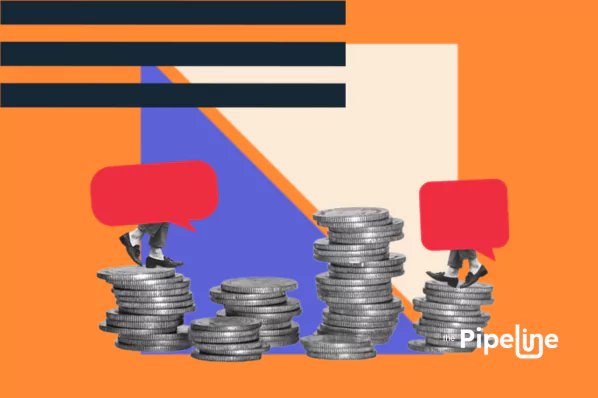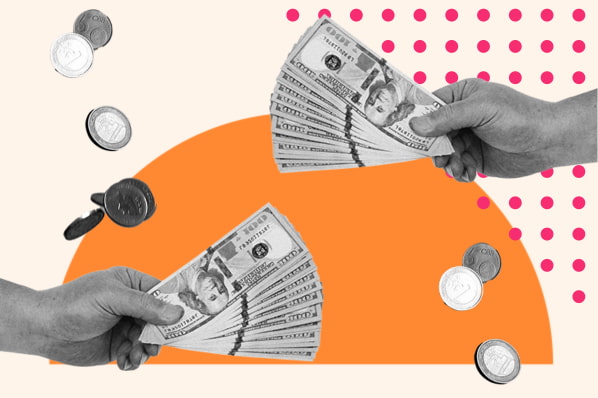Welcome to “The Pipeline” — a weekly column from HubSpot, featuring actionable insight from real sales leaders. This week's installment comes from Arash Asli, CEO of Yocale. Want more “Pipeline” Content? Subscribe to our newsletter.
Research shows there is a weapon you can use to increase your sales performance — a sales strategy that's effective no matter where you work or what you sell. What is this sales strategy, you ask?
Strategically framing your prices. It doesn’t matter if you're operating in the luxury market or if your product is as cheap as chips — it’s how you frame those prices that will influence prospects and accelerate your close rate.
Here, I‘ll discuss four tactics you can use to frame your prices as effectively as possible — without resorting to discounting. Let’s take a look.
4 Powerful Pricing Tactics That Have Nothing to Do With Discounts
1. Positioning Time Over Money
Regardless of the price of your product, whether it’s $1 or $1000, focusing on “time” over price can boost sales and customer satisfaction.
In this context, time might equal the promise of frequent and long-term use or hours of the buyer’s life they’ll get back.
According to a study from two Stanford Graduate School of Business researchers, highlighting the experience someone will have with your product is key. They used three different signs to advertise a lemonade stand — one that mentioned time, one that mentioned money, and one that mentioned neither.
The “time” sign attracted twice as many people as the “money” sign — these customers also spent twice as much.
“Ultimately, time is a more scarce resource — once it's gone, it's gone — and therefore more meaningful to us,” Cassie Mogilner, one of the study’s authors, explains. “How we spend our time says so much more about who we are than how we spend our money does.”
When pitching to prospects, talk about the time they’ll spend or save using your solution — not how much they’ll spend.
.png)
Free Sales Pricing Strategy Calculator
Determine the best pricing strategy for your business with this free calculator and template.
- Cost-Plus Pricing
- Skimming Strategy
- Value-Based Pricing
- And More!
Download Free
All fields are required.
.png)
2. Not Competing on Competitor Pricing
Don’t compete on pricing. A separate study from Stanford found emphasizing your products are priced lower than your competitors usually backfires.
The researchers asked participants to choose between three cameras: A basic, inexpensive camera, a more advanced camera at a mid-priced price point, and an advanced camera at a high one. Far more participants “compromised” by selecting the mid-priced camera when explicitly told to compare the three.
“… Being told to make the comparison made people much more risk averse," the authors note.
When consumers are forced to compare products, they tend to focus on the competitive disadvantages — not your solution’s advantages. So if you catch yourself uttering something like “Our price is 20% lower,” or “Compare our price to Product X’s price,” cut yourself off.
3. Handling the “Price Is Less Everywhere Else” Objection
Two price objections come up frequently: “I can get a better price from competitor Y” and “The price is less everywhere else.”
When you hear these, focus the conversation on your product’s quality. Point out that the better quality, more robust feature set, or greater support provide more than enough value to justify the higher cost. This strategy can actually work when you’re competing against bigger, higher-priced competitors as well.
There are times when people pay more for a product or service — but in those cases, they're paying for the brand name. If your company is a startup, for example, your company most likely doesn’t have the brand recognition to charge the same prices.
In other words, your prices are lower, but the quality is just as high.
4. Highlighting Your Product’s ROI
The only time the price should ever factor into an argument is if the ROI of your product or service far outweighs the price. It’s been proven time and time again that people will pay for quality, regardless of price.
While you don’t want to compete on prices, you do want to compete when it comes to the benefits that you offer that are favorably matched against your competitors. Value is always the key to the customer’s heart, and value applies more to quality than it does to cost.
You can also mention features you’ll be releasing soon — these benefits will make your product seem more desirable, even though they’re not available yet.
Beyond giving discounts, front-line sales representatives can’t typically change or increase their standard prices. However, they can increase customer loyalty with proper employee training. Use these four framing tactics to get the results you want regardless of your product’s cost.
.png)
Free Sales Pricing Strategy Calculator
Determine the best pricing strategy for your business with this free calculator and template.
- Cost-Plus Pricing
- Skimming Strategy
- Value-Based Pricing
- And More!
Download Free
All fields are required.
.png)
Pricing Strategy
.png?width=112&height=112&name=Image%20Hackathon%20%E2%80%93%20Vertical%20(45).png)







![Price Skimming: All You Need To Know [+ Pricing Calculator]](https://53.fs1.hubspotusercontent-na1.net/hubfs/53/price-skimming-strategy.jpg)

.jpg)
![B2B Pricing Models & Strategies [+ Pros and Cons of Each]](https://53.fs1.hubspotusercontent-na1.net/hubfs/53/b2b-pricing-models-and-strategies.jpg)
